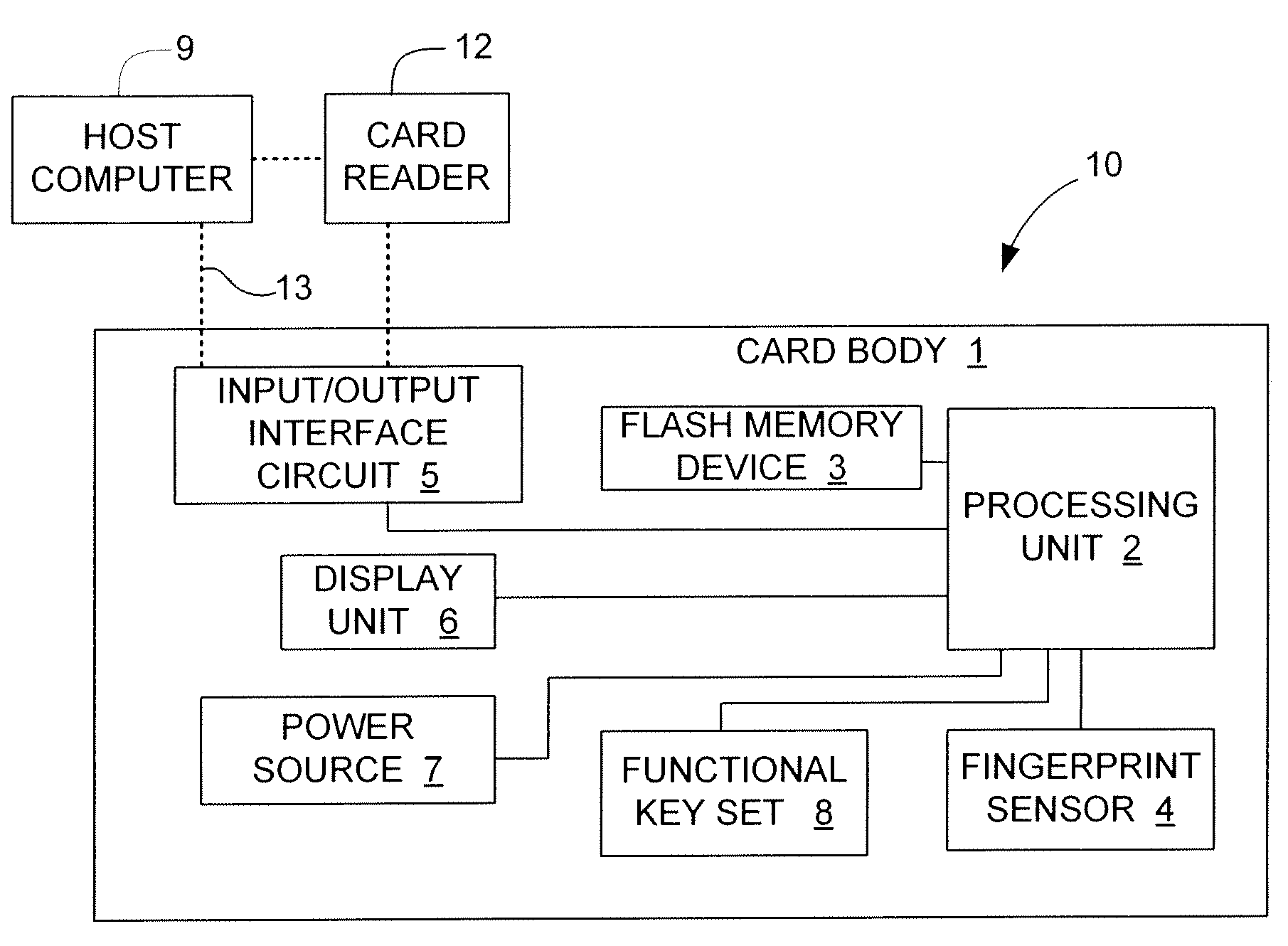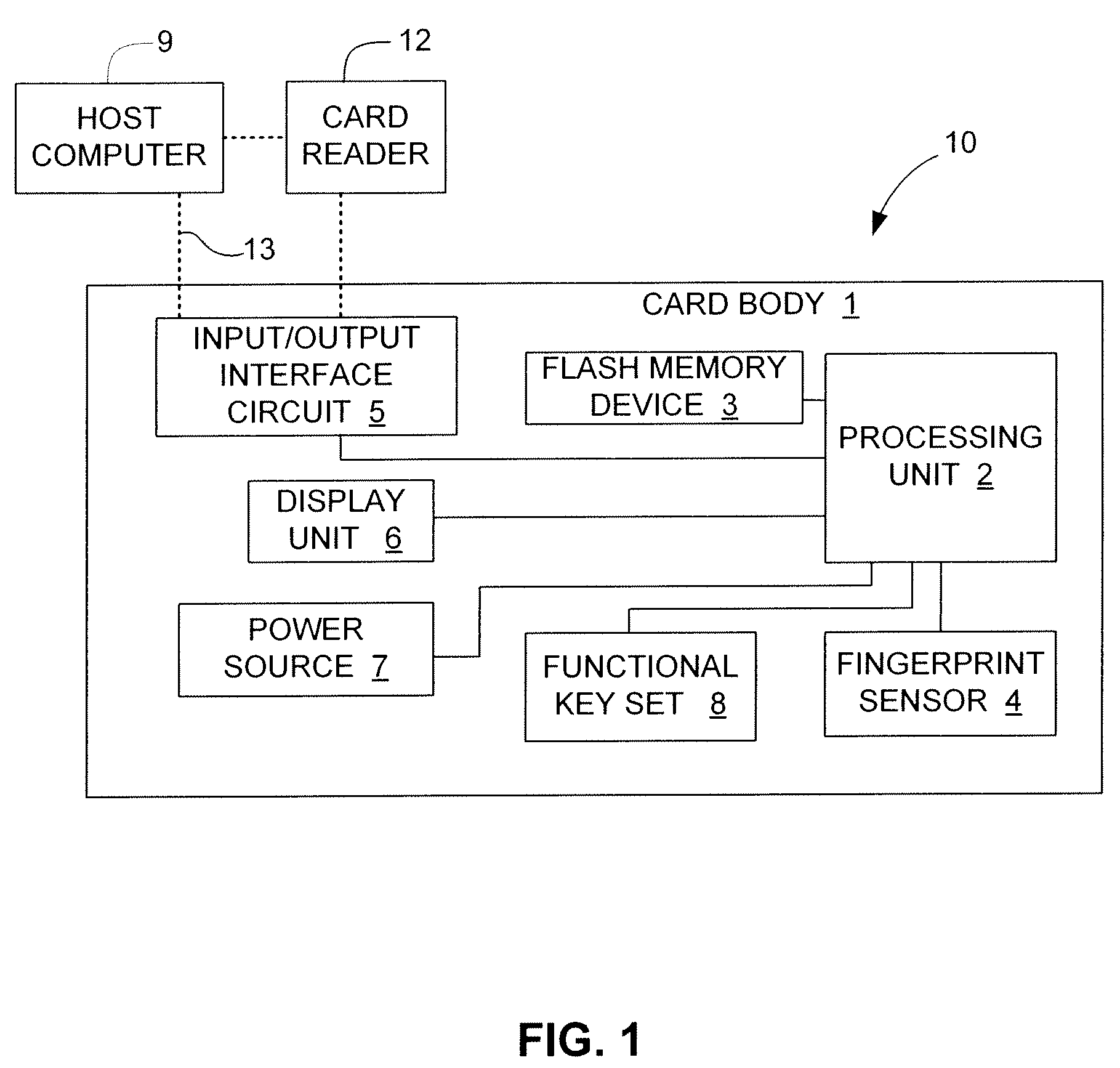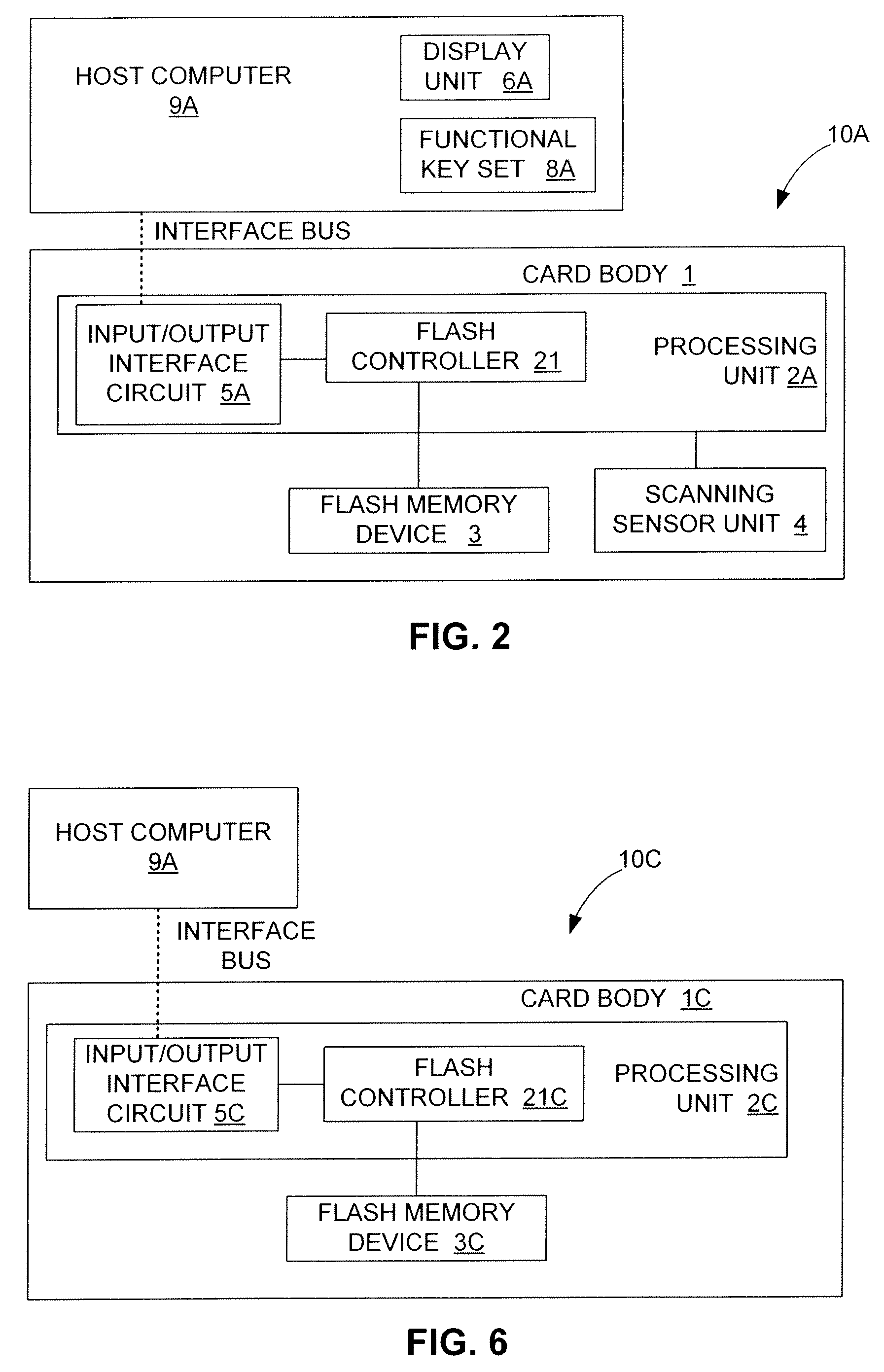Electronic data flash card with fingerprint verification capability
- Summary
- Abstract
- Description
- Claims
- Application Information
AI Technical Summary
Benefits of technology
Problems solved by technology
Method used
Image
Examples
Embodiment Construction
[0022]Referring to FIG. 1, according to an embodiment of the present invention, an electronic data flash card 10 is adapted to be accessed by an external (host) computer 9 either via an interface bus 13 or a card reader 12 or other interface mechanism (not shown), and includes a card body 1, a processing unit 2, one or more flash memory devices 3, a fingerprint sensor 4, an input / output interface circuit 5, an optional display unit 6, an optional power source (e.g., battery) 7, and an optional function key set 8.
[0023]Flash memory device 3 is mounted on the card body 1, stores in a known manner therein one or more data files, a reference password, and the reference fingerprint data obtained by scanning a fingerprint of one or more authorized users of the electronic data flash card 10. Only authorized users can access the stored data files. The data file can be a picture file or a text file.
[0024]The fingerprint sensor 4 is mounted on the card body 1, and is adapted to scan a fingerp...
PUM
 Login to View More
Login to View More Abstract
Description
Claims
Application Information
 Login to View More
Login to View More - R&D
- Intellectual Property
- Life Sciences
- Materials
- Tech Scout
- Unparalleled Data Quality
- Higher Quality Content
- 60% Fewer Hallucinations
Browse by: Latest US Patents, China's latest patents, Technical Efficacy Thesaurus, Application Domain, Technology Topic, Popular Technical Reports.
© 2025 PatSnap. All rights reserved.Legal|Privacy policy|Modern Slavery Act Transparency Statement|Sitemap|About US| Contact US: help@patsnap.com



